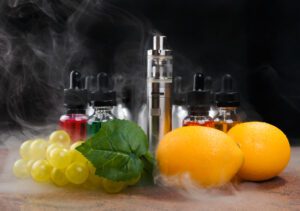U.S Senate Majority Whip Dick Durbin yesterday testified at a House Oversight and Government Reform Subcommittee on Economic and Consumer Policy hearing that focused on youth vaping and the role of the Food and Drug Administration (FDA) in regulating e-cigarette products.
During his testimony, Durbin blasted the shortcomings of the FDA’s tobacco oversight over the last several years and urged the agency to rectify its missteps and put public health and the safety of children at the forefront of its mission, according to a press release.
“Flavored e-cigarette products have exploded in popularity among our kids—nearly four million now vaping, a 361 percent increase in just eight years when only 800,000 kids were vaping,” Durbin said. “Who is the cop on the beat to whom we entrust our children? It’s the Food and Drug Administration. And this agency has been timid and reluctant for way too long.”
All e-cigarette manufacturers were required to submit Premarket Tobacco Product Applications (PMTAs) to FDA by September 9, 2020, in order to legally stay on the market. FDA is now evaluating those applications based upon a public health framework and is required to complete review by September 9, 2021. FDA’s decisions on the PMTA applications will determine the course of the youth vaping epidemic.
In his testimony, Durbin urged the FDA to finally apply the public health standard that Congress passed in 2009 under the Tobacco Control Act and evaluate whether a product can stay on the market if it is, “appropriate for the protection of public health.” Durbin said he feared the FDA will over-value the unproven potential benefit of cessation for adult smokers, while under-valuing the clear evidence and experience we’ve had over the past several years on how flavored products hook kids.
“Only four percent of adults use e-cigarettes [compared] to 20 percent of high-school students. Kids who never would have picked up a tobacco product are vaping. It’s simple: any product with a history of increasing youth use must be rejected by FDA—especially flavored products that we know hooks the kids. This is the Super Bowl for the FDA’s tobacco effort and I’m afraid they aren’t ready for primetime. I hope they prove me wrong,” Durbin said.
Durbin went on to describe how despite promises from the Trump Administration to crack down on kid-friendly e-cigarette flavors, the FDA still left loopholes that have been exploited by the vaping industry to continue to hook kids onto new and illegal products.
“The result? Kids migrated…to the products that remained unregulated on the market: menthol flavored e-cigarettes and disposable vaping products. The use of disposable e-cigarettes… which were exempted from FDA’s January 2020 action, increased 1,000 percent last year. Make no mistake: kids get it. If we don’t take this seriously they will find those loopholes continue their addiction,” Durbin said. “And because FDA allowed menthol-flavored cartridges from JUUL and others to stay on the market, their use…increased from 11 percent to 62 percent of the [cartridge] market. Another failure by the FDA.”





















